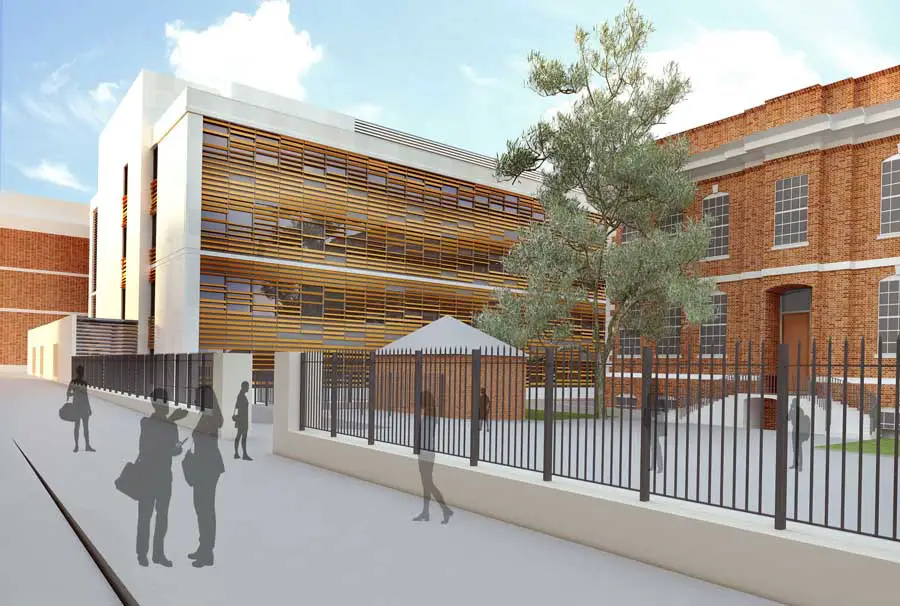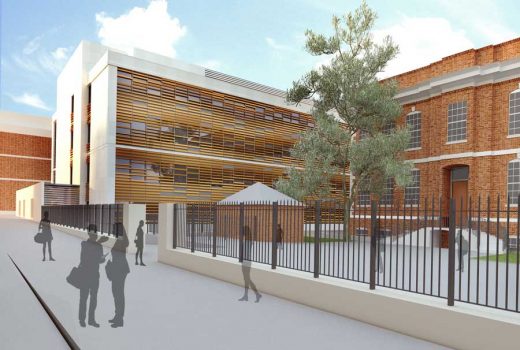Oxford Molecular Pathology Institute Building Design, Project News, UK, Images
Oxford Molecular Pathology Institute
OMPI Development, England design by Nightingale Associates & Make, UK
23 Sep 2009
Oxford Molecular Pathology Institute Project
Oxford University research facility gets green light
Design: Nightingale Associates and Make
Nightingale Associates and Make have been granted planning permission for University of Oxford science building
The new 5,750sq m Molecular Pathology research facility – adjoining the Sir William Dunn School of Pathology – for the University of Oxford will deliver much needed flexible laboratory spaces and new computer services to the University provide state-of-the-art accommodation to attract the highest caliber of staff and students.
Designed jointly by Nightingale Associates and Make, the contemporary new building will replace an existing block to the north-west of the Pevsner-listed, Dunn School and has been sensitively designed to provide a calm and respectful counterpoint to the William-and-Mary style of the School.
Responding to its historic neighbour, it will offer a modern interpretation of the external detailing such as the cornices and plinths while the horizontal expression on the facades, the windows and the materials have all been selected to echo the details of the original building.
Adrian Gainer of Nightingale Associates said: “We are delighted that Oxford City Council has granted us planning permission to proceed with this new building for the University. It will add a vital research facility to the University’s offering and help it to remain at the top of the tree in terms of scientific research provision.”
Justin Nicholls, architect and partner at Make said: “We completed our Old Road Campus building for the University of Oxford 12 months ago and it is a real privilege to be back designing a second state-of-the-art facility for the University. In this location we have an important neighbour which needs to be considered and revealed; our building will complement and respond to its setting yet still provide a modern and contemporary structure befitting a high tech interior.”
Internally, the laboratory spaces and office facilities are laid out around a sculptural timber clad staircase which will create a social focal point within the building. The entire basement will house a highly specialised data centre to record and store information.
The scheme has been designed to meet 20 per cent of its energy requirements through on-site renewables; these include a CHP plant, borehole ground-source heating, solar water heating and an absorption cooling process which uses the excess heat generated by computing equipment to cool the building.
The joint venture won an invited competition staged last year to design. Work has already begun on site with Mace Plus appointed as contractor and is scheduled for completion in 2011.
Make and Nightingale Associates collaborated previously on the Old Road Campus for the University of Oxford which was completed in 2007 and acted as an exemplar for modern laboratory facilities bringing together several different disciplines of cancer research and enabling them to interact and collaborate.
Oxford Molecular Pathology Institute Project images / information from Nightingale Associates 230909
OMPI – Oxford Molecular Pathology Institute Building
Design: Make with Nightingale Associates
Oxford Molecular Pathology Institute
Location: Oxford, England, UK
Architecture in England
Contemporary Architecture in England
Oxford Architecture Designs – chronological list
Oxford Architectural Walking Tours
Chemistry Oxford
Francis- Jones Morehen Thorp
Chemistry Oxford
Brasenose College Buildings
Berman Guedes Stretton
Brasenose College Oxford University
Comments / photos for the Oxford Molecular Pathology Institute Oxford Architecture page welcome



